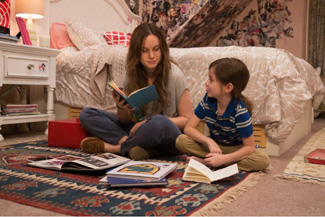|
|
Book vs. Movie: RoomBy Ben GruchowFebruary 4, 2016
Events that follow shortly afterward, involving Joan Allen and William H. Macy as Ma’s parents, are similarly impactful. But the narrative does take a considerable step back in urgency and emotional immediacy as we settle into a long recovery process for Ma and Jack. It’s appropriate to the subject matter, but it creates a perception of narrative drift that really wasn’t there in the novel, and this part of the movie also takes a hit for simplifying some of the complex feelings insinuated by Ma’s parents in the source material. If there’s a tradeoff to this simplification, it’s that it draws a much clearer emotional line to a late-in-the-film incident wherein Larson is taken out of the principal story, and Jack’s recovery begins the final part of its arc. The Verdict Both versions of Room contain potent illustrations of pessimism and optimism in the face of trauma, and neither one is cheap enough to suggest that a recovery from such trauma is easy or guaranteed. The source novel provides us with a second half that makes this point with greater articulation; the movie sacrifices some of the articulation for gentleness of approach. However, I find myself realizing that the first half of the film works slightly better as cinema than the second half of the novel works as prose, and it’s such a lopsided balance between the movie and the book when it comes to that first half that it’s no contest in that regard. And really, that first half is the critical part of the story; without it, we have a muted short story about recovery without enough in the way of incident to qualify it as a total success. The cinematic version of Room, at least, fulfills that requirement to a greater degree. Book vs. movie winner: Movie.
|

|
|
|

|
Friday, May 3, 2024
© 2024 Box Office Prophets, a division of One Of Us, Inc.


